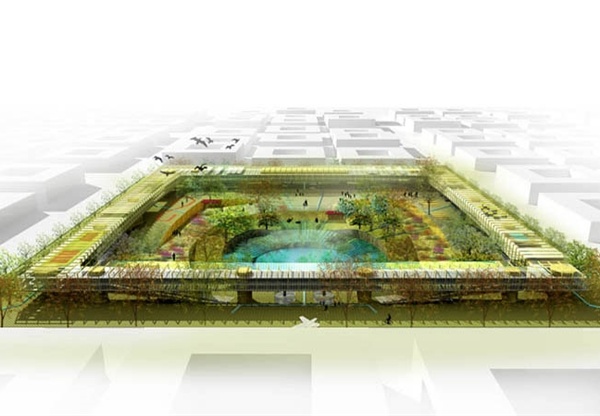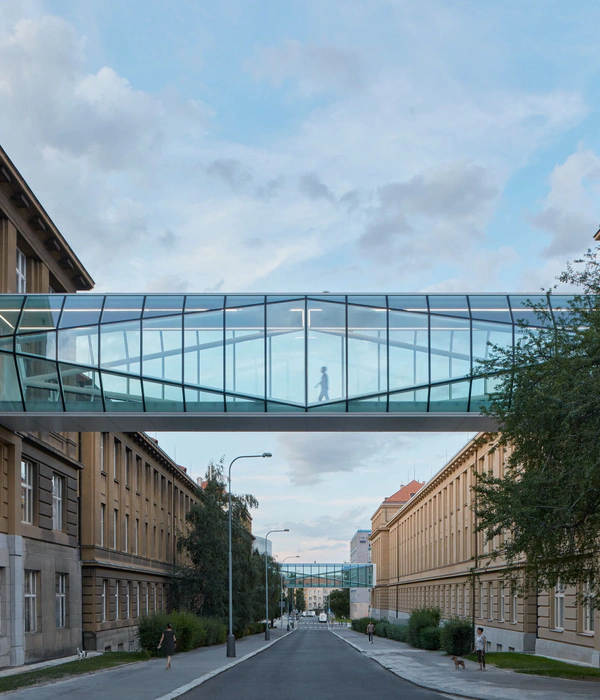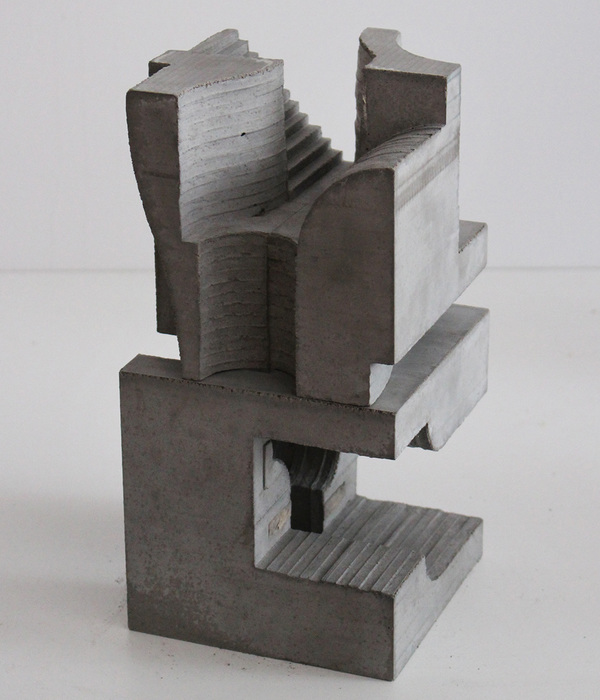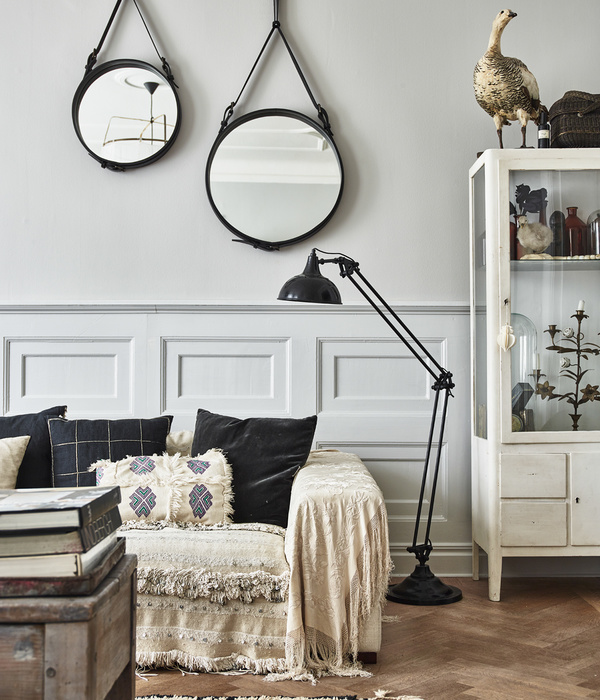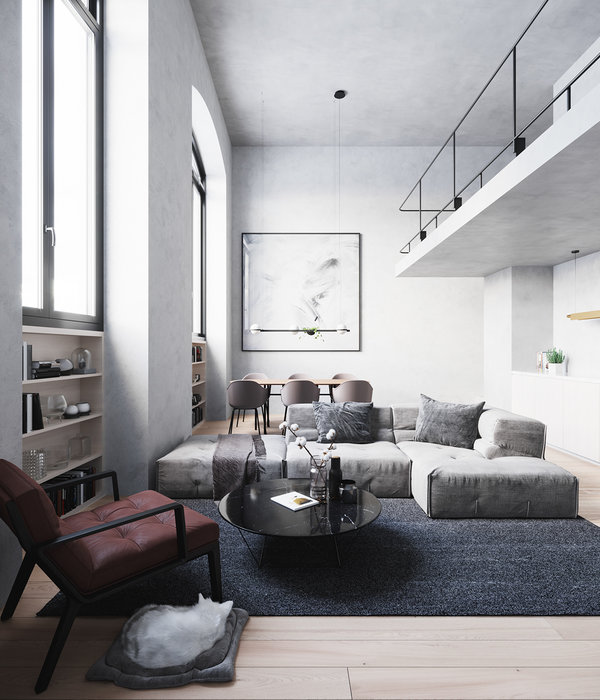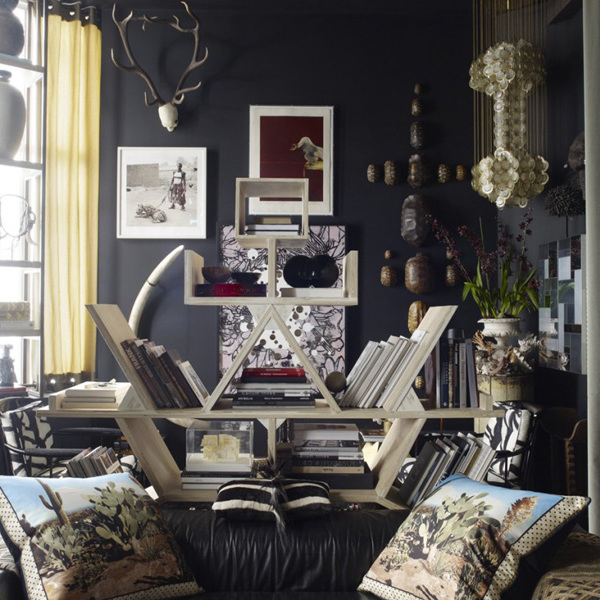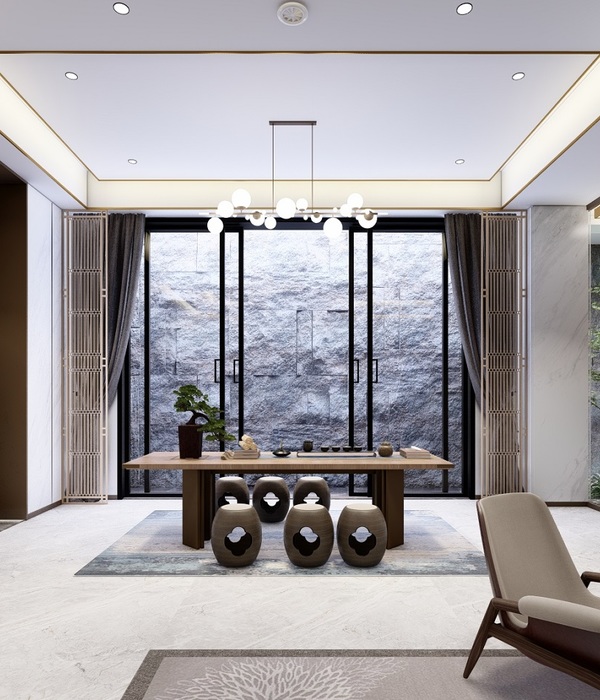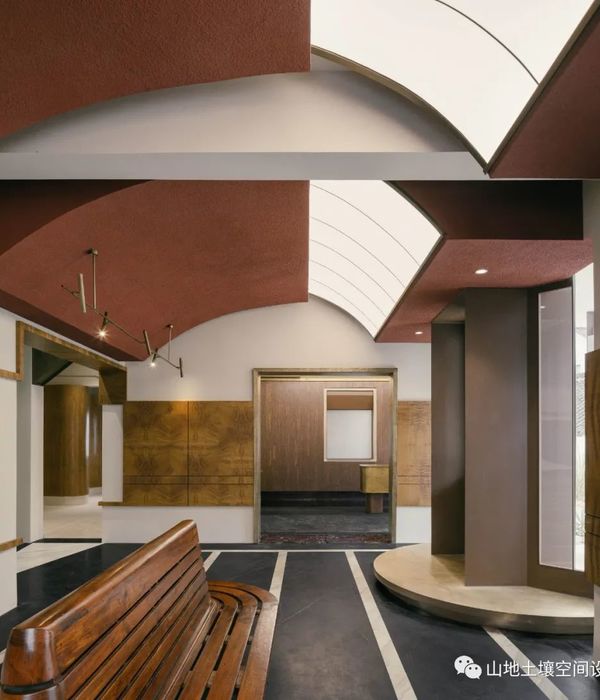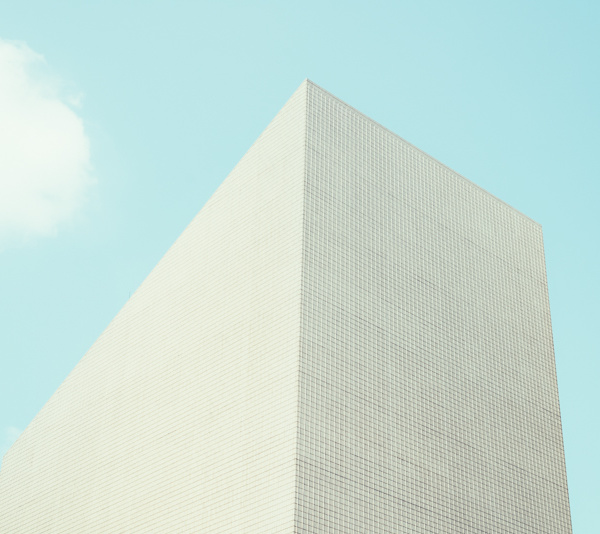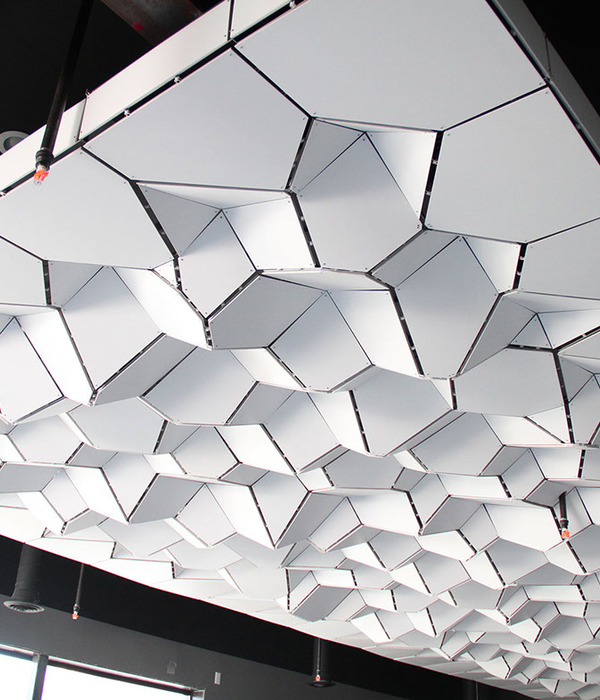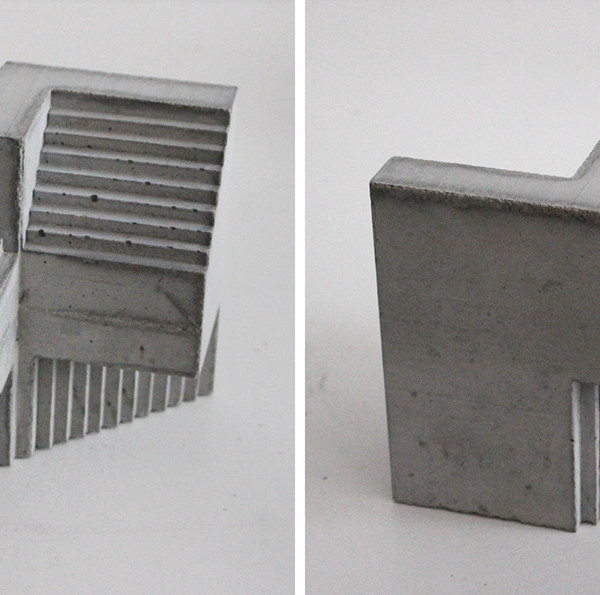该酒店位于Seiser Alm/ Alpe di Siusi高原山区,是基于Zallinger避难所的一个翻新和扩建项目。这个19世纪的谷仓被重建成一个个迷你小屋,使住户们重新感受到高山村庄的魅力。
ClimaHotel要求建筑充分尊重当地传统,将空间的舒适性和可持续性相结合,在各个层面上都最大限度地保护其周边环境。该项目由长期以来一直致力于绿色旅游建筑设计的南蒂罗尔(South Tyrol)的建筑事务所noa*负责设计。
With the renovation and expansion of the Zallinger Refuge at the Seiser Alm/ Alpe di Siusi, a new model of hospitality was born and serving as a good example of responsible tourism.
An example of a historical and landscape recovery intervention in a high mountain context. The nineteenth-century barns are reborn as mini-chalets, which bring back the charm of an alpine village. The South Tyrolean tradition is combined with comfort, quality of design and sustainability.
The ClimaHotel was built with maximum environmental protection in every aspect of the construction. The project, designed by noa*, an architecture studio in South Tyrol that has long been committed to developing innovative models of receptivity and green tourism (they were recently included by Dezeen in the short list of the 20 emerging international architecture firms for the year 2018).
▼项目概览,overview ©AlexFilz
项目旨在在不改变原有的景观和环境之间的平衡的前提下,提高这座古老的高山酒店的空间质量和住宿容量,同时创造一种美学价值和可持续性。
这也是noa*在Alpe di Siusi山区规划和扩建Zallinger避难所的主要考量。
The aim was to improve the quality and accommodation capacity of an old high mountain hotel structure without altering the delicate landscape and environmental balance, while at the same time creating aesthetic value and sustainability. This was noa*s (network of architecture) goal in the planning and expansion of the Zallinger Refuge in the Alpe di Siusi area.
▼鸟瞰图,bird-eye’s view ©AlexFilz
该项目于2017年完工,在不改变现有建筑体量的情况下创造了新的空间,同时又一次地将这座小村庄原有的历史聚居地的特点呈现在人们眼前。通过最终的设计方案和翻修扩建所采用的材料,这座避难所曾在环境和传统上取得的成就,奇迹般地复苏了。
The project, completed in 2017, has created new spaces without altering the existing volumes, and at the same time has returned to the historic settlement with the characteristic of the original small village. Through the solutions and materials adopted, the magic of that era was brought back to life, in both respect for the environment and traditions.
本项目的设计师Stefan Rier解释道:“在这个项目中,我们还试图展现建筑与环境之间的紧密联系,这也是我们在所有项目中竭力表现的一点。我们希望提出一种新的生活和建筑服务模式,一方面它能够重新使用传统建材,恢复传统的建筑形式,另一方面它还能展现出一种高质量、可持续的舒适空间。高山环境十分复杂,但同时它也充满了迷人的挑战性,我们必须充分了解和尊重它。我们一直在考虑一种这样的新型空间:适合人的尺度、舒适且热情,但同时最重要的是,它必须是独特且真实的。”
Architect Stefan Rier explains: ”In this project we have also tried to bring out that strong relationship between architecture and context, which characterizes all our works. We want to propose new models of life and hospitality that on the one hand recover traditional forms and materials, on the other hand express quality of design, high levels of comfort and sustainability. The alpine environment is a complex and fascinating system that must be understood and respected. We think it’s important to think of new spaces and ways to inhibit it: environments on a human scale, comfortable, welcoming, but above all unique and authentic”.
▼项目在不改变现有建筑体量的情况下创造了新的空间,展现出基地的聚落特点,the project creates new spaces without altering the existing volumes, and expresses the historic settlement with the characteristic of the original small village ©AlexFilz
Zallinger小屋最初于19世纪建在2200米的海拔高度上。这次扩建对于它来说是一个重建其原有结构并修复酒店中心体量和被拆除的谷仓的绝佳机会,同时还可以根据基地最初的规划重建七座新的迷你小屋。
The Zallinger Hut was first built in the middle of the 19th century at 2200 meters, below the Sassopiatto. It was formerly surrounded by seven barns and a small church. Subsequently, the barns had been replaced by a single large building (1880), which over time had assumed other functions.
The extension was an opportunity to revive the original structure, proceeding, as well as the restructuring of the central body of the hotel, the demolition of the former barn and the construction of seven new chalets arranged respecting the original plan of the site.
▼小屋外观,exterior view of the mini-chalets ©AlexFilz
noa的设计目标是以现代的建筑手段来恢复南蒂罗尔山区牧场的传统结构,从而设计新的小屋。实心木块从外部包裹着小屋,给人一种虚实空间相互交叠的错觉,成为了新酒店的设计主题。
其设计灵感来源于古代的谷仓设计,避免了裸露在外的窗户在高山地区可能造成的不合时宜的光反射现象。大窗户处的木板可以自由打开,住户能够由此欣赏到壮阔的高山风景;而当它们关闭时,便可营造出一种回味无穷的光影效果,使住户在身心上得到放松。
Noa*’s aim was to recover the traditional structure of the South Tyrolean mountain pastures in a modern way, which resulted in the design of the new chalets. The external claddings that surround the chalets are made of blocks of solid wood appearing to be stacked together in an alternation of full and empty spaces, becoming a dominant motif of the new settlement.
The outcome, inspired by the structure of the ancient barns, avoids the annoying reflections of the exposed windows, inappropriate in a high mountain context. The wooden panels are designed to be able to open at the large windows, providing a view of the spectacular alpine scenery, while when they are closed create evocative light and shadows in the rooms, contributing to the relaxation of hotel guests.
▼实心木块从外部包裹着小屋,给人一种虚实空间相互交叠的错觉,the external claddings are made of blocks of solid wood appearing to be stacked together in an alternation of full and empty spaces ©AlexFilz
设计的首要重点在于建筑的可持续性设计、对自然的尊重和与自然之间的直接联系。例如,在新设计的小屋中,如何在小空间的限制下将舒适度最大化、以及使用当地传统的屋顶木瓦和经过认证的建材等,从而使建筑群获得了ClimaHotel认证。
值得一提的是,建筑师甚至决定不在连接新建小屋和原有避难所的小路上安装电灯,以避免光污染,而是鼓励住户使用灯笼,从而更好地欣赏到夜晚迷人的星空。
▼实心木块的堆叠形成小屋的外立面,the stacking of the solid wood blocks creates the charming facade of the chalets ©AlexFilz
此外,随着Zallinger中心的整修,建筑师还提出了一项提案,即尽量减少该地区近年来暴涨的车流量。从2014年开始,在noa的帮助下,Zallinger方面建造了一个集中停车场,用以容纳所有的车辆。该停车场即将完工,然而截止至2017年,人们都只能通过公共汽车或者冬日里的雪地履带式车辆到达酒店。
It is significant that along with the refurbishment of the Zallinger Refuge, a plan has also been launched to minimize the flow of cars in an area that has seen strong visitor growth in recent years.
Starting in 2014, the Zallinger property, with the support of noa *, involved the managers of 6 other refuges in the area in the construction of a single collection point for the guests’ cars located in the valley. This structure is nearing completion, but already in 2017 the arrivals to the guesthouses occur only by bus or, in winter, with the ‘snow cat’.
▼木块堆叠细部,the details of the stacking ©AlexFilz
项目历史 | Additional notes A BIT OF HISTORY
Zallinger酒店建于1854年,至今已有160多年的历史。经过历史的变迁,时至今日,它仍然在不断地被翻新,以便适应现代生活需要。
The Zallinger Hut is over 160 years old. It was built by Karl von Zallinger- Stillendorf, a prominent figure of the era in South Tyrol, who bought the land in 1854 and in 1858 added a chapel next to the shelter. At the time the area was called “Sassegg”, which means “the high ground on the big stone”, with reference to the Sassopiatto, the mountain that overlooks the hut.
In 1933, Anton Schenk – future mayor of Laion, a small town at the entrance to Val Gardena – bought the building, which he then gave to his daughter Zita on her marriage with Hans Schenk-Trojer. On the death of his wife, Hans continued his activity as a hotel entrepreneur first alone and then, starting from 1990 in collaboration with his second wife, Luisa Schenk, from Castelrotto, a famous Dolomite village in the Alpe di Siusi area.
In the 90s the Zallinger shelter was renovated to meet the needs of a more modern hotel accommodation. When Hans dies in 2010, the legacy of Zallinger passes into the hands of his wife Luisa and his nephew Markus, who still today passionately renew the hospitality of the historic South Tyrolean refuge.
▼小屋与周边环境和现有建筑统一,the chalets integrate with the central guest building and the surroundings ©AlexFilz
酒店扩建 | THE NEW ENLARGEMENT
noa的设计在原酒店中央客房区的13间客房的基础上,加建了24间客房。所有的小屋都是成对出现的。每间小屋包含四间相互独立的房间,通过一条公用走廊进入,从而保证了房间的私密性。
Noa*’s architectural plan added 24 rooms in the new mini-chalets and left the original 13 rooms, which were already available in the central building of the guesthouse.
The chalets are always in pairs. Each chalet has four rooms, not connected, which is accessed by a shared distribution corridor. Privacy is thus guaranteed.
▼成对出现的小屋,the chalets are always in pairs ©AlexFilz
每个建筑单元都位于一个预制混凝土高台上,故而可以将施工现场对环境的影响降至最低,不仅有利于缩短施工周期,还方便了材料的运输。
室内外皆使用木墙,营造出一种现代“木屋”的温馨之感,同时丰富了酒店的美学意义。
From the constructive point of view, each unit rests on a concrete plateau, which has been constructed with prefabricated methods in wood starting from a ‘custom’ engineering by noa*s architects. In this way the construction site has had minimal impact on the environment, both in construction time on site, as well as the transportation of materials.
The esthetics, for both the architecture and interiors are characterized by the constructive wooden walls, giving a modern “log-cabin” feel to the space.
▼每个小屋都位于一个预制混凝土高台上,each unit rests on a prefabricated concrete plateau ©AlexFilz
▼平台夜景,the plateau view at night ©AlexFilz
通过一条公用走廊进入小屋内的房间,four rooms inside the chalet is accessed by a shared distribution corridor ©AlexFilz
房间内部就像是温馨的林间小屋,温馨而舒适。室内配有带有针织细节和毛毡的靠垫。
部分房间自带小阁楼,可作为儿童卧室或者休闲区使用。
The interior of the rooms is cosy and warm with a modern mountain-lodge character. The materials are inspired by the traditional hunter’s clothing; cushions with knitted details and felt. Some rooms have a small loft that can be used as a bedroom for kids or just a relaxing corner.
The sustainable mission of the project is also expressed in the fact that the property has renounced the ‘4 Stars’ classification of the hotel, in order not to increase the volume of the building to the detriment of a negative impact on the landscape: Zallinger’s challenge is to offer a receptivity luxury through the quality of the spaces and services without increasing the surface square meters in a macroscopic way.
▼房间内部就像是温馨的林间小屋,温馨而舒适,the interior of the rooms is cosy and warm with a modern mountain-lodge character ©AlexFilz
▼部分房间自带小阁楼,可作为儿童卧室或者休闲区使用,some rooms have a small loft that can be used as a bedroom for kids or just a relaxing corner ©AlexFilz
公共空间与餐厅 | THE PUBLIC SPACES AND THE RESTAURANT
对原有酒店中心部分的整体体量进行维护,但建筑师对其内部的首层平面进行了彻底地重新设计:新的功能空间由前台、大堂、休息区和餐厅共同组成,其中餐厅和休息区对外开放。同时在大型壁炉的周围设置只允许内部客人使用的休闲区,确保了空间的私密性,使客人能够更加轻松自在地享受生活。
The central body of the historic lodge has been maintained but completely redesigned in the internal layout of the ground floor: the new interior design incorporates the reception, the lobby, the lounge and the restaurant. The restaurant and the lounge area have been designed to accommodate external guests as well: many skiers stop for lunch, seeing as the refuge is located on the main ski slopes of the Alpe di Siusi mountain range, while the lounge is very popular during the evenings. However, hotel guests can count on a more private and familiar area, which is focused around the large fireplace.
▼建筑首层的休息区,the lounge on the ground floor ©AlexFilz
▼仅供内部客人使用的私密休息区,the private lounge area for hotel guests ©AlexFilz
该项目的内置家具均由noa设计并定制。室内墙壁用木材覆盖,不仅突显当地传统,更达到了吸声的效果。同时选用毛毡地板,进一步加强吸声效果。
All the built-in furnishings were designed by noa* and customized.
According to the complete the new Billiani of the mechanism of the dine in comfort.
The walls are covered in wood, with the idea to recreate the atmosphere of a traditional “stube” – the classic alpine room where once the family gathered around the fireplace – but with the contemporary sign of the wooden boards that seamlessly rise from the walls and on to the ceiling, behind which, sound-absorbing panels have been positioned to create maximum acoustic comfort.
The choice of using a felt flooring, a traditional alpine material that combines resistance and softness, also aims to the same result.
▼餐厅,restaurant ©AlexFilz
酒吧区使用一个当地巨大的杉树树干作为吧台,在建筑内部创造出一种亲近自然之感。此外,室内照明系统也经过了精心的设计。
The bar area is characterized by a huge fir tree-trunk (local essence) as a counter: a solution that brings the presence of nature inside the building with its beauty, primordial strength and its complexity in structure.
Great attention has also been given to the lighting in this project. Precision in the functional aspect and careful design choice in the aesthetics (as in the bar lights produced by the Spanish company Marset).
▼酒吧区使用杉树树干作为吧台,the bar area is characterized by a huge fir tree-trunk (local essence) as a counter ©AlexFilz
健身区 | THE WELLNESS AREA
健身区位于原先谷仓的位置上,是一个独立的建筑体量,一个包含着桑拿房的金属结构体量从中延伸出来。室内空间有两个大窗户俯瞰着周围景观。
The wellness area stands in place of the pre-existing barn, as an independent building, with a metal-plated structure branches out, that houses the sauna, an awe-evoking environment, from the spatial point of view, with two large windows overlooking the landscape: the first looks towards the valley; the second opens on Mount Sassopiatto, with an inclination of 45 degrees (to allow the snow, during heavy snowfall, to flow to the base of the frame, leaving the view free).
A relaxation area with a small distribution of hot and cold drinks completes the range of services, adding to the sense of comfort.
▼桑拿房的两个大窗户俯瞰着周围景观,the sauna room with two large windows overlooking the landscape ©AlexFilz
酒窖 | WINE CELLAR
木制的架子用于放置葡萄酒,让人联想到书架。
The design recalls the peaks of the mountains that rise towards the sky: the wooden shelves, in fact, create a sort of bookcase, characterized by inclined upright crafts of wood and elongated compartments that accommodate the individual bottles of wine (the refined choice of labels is personally selected by the sommelier owner).
▼木质酒架,the wooden shelves ©AlexFilz
建筑平面和认证 | FLOOR PLANS & CERTIFICATES
建筑的供暖系统经过精心设计,有助于节能环保。此外,本项目还获得了ClimaHotel的认证。
The heating and hot water supply are obtained through the installation of a pallet boiler, which guarantees ‘zero impact’ on CO2 in the atmosphere. A buried silo allows you to store the pallet during the summer season and then be consumed in winter.
The interiors are certified for a total reduction of the Radom indoor concentration.
The guesthouse and the new spaces have obtained the seal of sustainability ClimaHotel, the certification of the Climate House Agency of the Province of Bolzano that distinguishes the accommodation facilities capable of promoting sustainable development both through the integration of the most innovative and ecological technologies and with strategic measures in the management. (text: Laura Ragazzola, journalist and consultant)
▼总平面图,site plan
▼首层平面图,ground floor plan
▼小屋层平面,chalet floor plan
▼小屋立面图,chalet elevation
▼小屋立面图,chalet elevation
▼桑拿房剖面图,sauna section
▼小屋剖面图,chalet section
Project Name: Zallinger Typology: Hotel Location: Seiser Alm/Alpe di Siusi, Saltria, 2054 m (I) Client: Berghaus Zallinger, Luisa Schenk & Burger Markus Architecture: noa* (network of architecture) Interior Design: noa* (network of architecture) Construction start: June 2017 Completion: December 2017 Intervention: Hotel conversion and extension Volume: 9608 m3 Surface area: 1870 m2 Text: Laura Ragazzola (translated from Italian) Photographs: Alex Filz
{{item.text_origin}}

